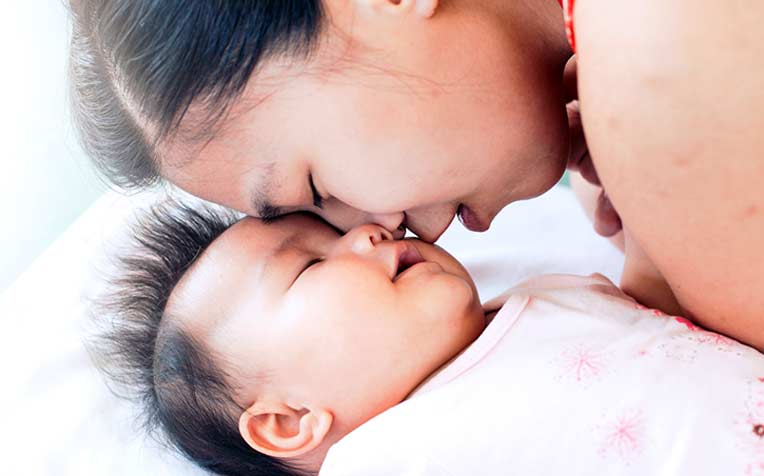
Pregnancy brings about a big change to a women's body both during the pregnancy and after childbirth.
"Your body undergoes a major transformation during pregnancy and an equally major one after labour and delivery. Whilst many women read up extensively on pre-pregnancy and caring of the baby, the understanding of the health of the body after birth is often overlooked," says Dr Terence Goh, Consultant, Department of Plastic, Reconstructive & Aesthetic Surgery, Singapore General Hospital (SGH), a member of the SingHealth group.
What are the changes that happens to your body and why do some women need a mummy makeover?
What happens to a women's body after birth of a baby:
- Breasts: Changes in size, sagging
- Abdominal muscles: Split in the muscles (diastasis recti)
- Vagina and perineum: enlargement, labia changes
- Legs: spider veins, varicose veins, stretch marks
- Skin: acne, chloasma (darkened patches of skin along the lips, nose or forehead), stretch marks
- Menstrual cycle
1. Your breasts after pregnancy
Right after delivery, the estrogen and progesterone levels will drop whilst the prolactin levels (the level of hormones that tells your body to produce milk) rise. This will lead to increased blood flow to the breasts and milk production leading to engorgement of the breasts. This peaks 2-3 days after childbirth and will settle down as your baby breastfeeds.
After pregnancy, your breasts could stay bigger, get smaller or revert to its pre-pregnancy size. It is not uncommon for women to drop a cup-size after pregnancy.
Some women experience sagging of the breast skin and this is due to the breast weight gain during pregnancy. Patients who smoke will find that they are more prone to skin aging as well.
2. Your abdominal muscles after pregnancy
After birth, your core abdominal muscles can be weak and most women would have some degree of diastasis recti (which is a split in the abdominal muscles) as a result of the baby and the enlarged uterus.
The split in the abdominal muscles (diastasis recti) may close on its own after the first 8 weeks of childbirth but it often doesn’t. This leads to
- Tummy that still looks pregnant
- Core muscles that are still weak and
- Back pain from carrying heavy loads
Many women end up with a softer, floppier tummy and how it firms up in the months after childbirth varies depending on the genetic makeup, post-natal exercises and how much the skin and tissues stretched during pregnancy.
3. Your vagina and perineum after pregnancy
If you have given birth via normal vaginal delivery, your vagina will probably remain a little larger than before. Over the next few days, the vagina will start to regain muscle tone and it will gradually get smaller.
Pregnancy and childbirth can also cause the skin of the labia to stretch. The labia forms the exterior of the genitalia and are important both for sexual intercourse and to protect the vagina. The labia tissues may shrink after childbirth and become uniform in size without causing discomfort and pain.
However, sometimes the labia may be overly large or asymmetrical and this can lead to discomfort and also a source of insecurity.
Stretched labia can affect your ability to exercise, engage in sexual intercourse and wear certain types of clothing. This can happen to women who only have one child, but it is usually more common in women with more than one pregnancy or have pregnancies close together.
4. Your legs after pregnancy
Pregnancy causes weight gain and this can lead to spider veins, varicose veins and stretch marks in the leg. Whilst this will get smaller with time, they are likely to be permanent.
The use of compression stockings can help to reduce the pain from distension due to the varicose veins and reduce the prominence of the spider veins after delivery.
5. Your skin after pregnancy
Hormonal changes, stress and lack of rest brought on from new parenthood may affect your skin along with the rest of your body.
Some women with perfectly clear skin during pregnancy will have more breakouts whilst some who had acne may begin to see improvement. Some women will notice chloasma (darkened patches of skin along the lips, nose or forehead) or a dark line running from the belly button to the pubic bone. This discoloration will begin to fade in the months after giving birth.
Depending on the weight gain and the size of the baby, you may have stretch marks along the belly and these will gradually become lighter in colour although they may not disappear entirely.
6. Your menstrual cycle after pregnancy
For women who are not breastfeeding, the menstrual cycles will likely return after 6-8 weeks.
For mothers who are breastfeeding, the menstrual cycles will probably not start until you start to cut down on nursing, usually around the 6-month mark and that’s when the menstrual cycles start to resume and the hormonal cycles also start to normalise again.
Read on to find out what is termed a 'Mummy Makeover'.
Ref: N18
Contributed by


















 Get it on Google Play
Get it on Google Play